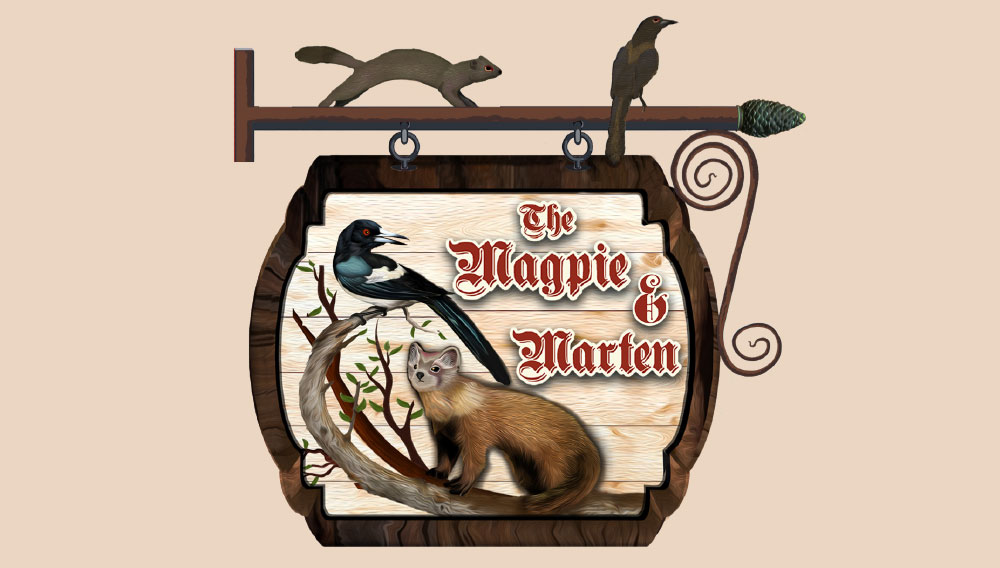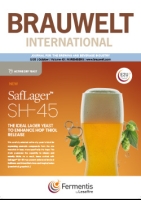Maturation
What’s that?! There’s a new series in BRAUWELT International? Yes, that’s right. And one that’s not like any of the others? Correct!
We are launching a new series in this edition, one covering topics that are of interest to YOU – as long as they touch upon technical and technological aspects of brewing. Where are the current problem areas in beer and beverage production? Is there something you’ve always wanted to know about beer and brewing? Christopher and Nancy McGreger regularly write about contemporary and historical aspects of the industry, in print and on brauwelt.com/en. We want to hear from you! Take part in the conversation by contacting us at . Christopher and Nancy open the discussion with a commentary on the topic of maturation.
Two types of brewers
All generalizations are false, as the saying goes – and having said that, generally speaking, there seem to be two types of brewers in the world: those almost solely focused on ingredients and their almost limitless combinations and those concentrating their efforts on understanding and refining production processes and equipment. They form what could be described as a yin-yang relationship, two complementary (yet sometimes opposing) forces.
As the first swell of craft beer splashed across the United States in the late 1970s and later became a tidal wave reaching almost every corner of the Earth by the early 2000s, brewers – many of them former homebrewers new to the industry – found a passion for ingredients, ordinarily the traditional ones, i.e., grain and hops, but also sometimes fruit, herbs and spices. Since hop storage and packaging (temperature, inert gas) had relatively recently allowed the more volatile and delicate constituents of the flowers we call cones to be preserved, these new brewers discovered an unexplored playground of hop varieties which fueled their passion for infusing unique aromas and flavors into their late-hopped beers. This fascination with ingredients among craft brewers continues to this day and has enriched, both literally and figuratively, not only hop breeders’ and cultivators’ purses but also beer drinkers’ thirst for diversity in beer. The same applies to malt and adjuncts. It is not unusual to see recipes for craft beer with up to ten different extract sources whether they be various kinds of malt produced with barley, wheat, rye, spelt, einkorn, etc. or adjuncts, such as unmalted grains, oats, rice, corn, among others, roasted, torrified, caramelized or otherwise. The past few decades have seen the resurrection of historical beers from the depths of brewing’s past as well as the creation of heretofore undreamt of concoctions by brewers around the world who are pursuing increasingly obscure flavors and aromas through the use of ever more novel or exotic ingredients. Their mantra: “The bigger and the more unusual, the better.” Casualties of the IBU wars will remember the gum-numbingly bitter period which has now given way to a yeasty and heavily fruity-floral cloudiness. Various kinds of barrel-aged or sour beers loosely based on Belgian traditions have also arisen to prickle our palates. As tasty as some of them have been, novelty never failed to eclipse drinkability and consistency.
Yet, these brewers seldom referenced a water or malt analysis, because the processes for treating water or modifying their single-temperature infusion mashing regimes to include other temperature optima in response to fluctuations in their raw materials, fall outside their wheelhouse, and thus few have pondered the nuances of these processes beyond their most fundamental applications. Malt is malt, and water is water. Needless to say, these brewers are less concerned with efficiency, product consistency or refining their process than creating an attention-grabbing beer for their customer base.
On the other side of the coin, there are brewers (usually classically trained), engineers and scientists who share an equally passionate fascination with beer production. They research and tinker with ways to improve the raw materials, brewing processes and the requisite equipment, from barley quality and malting through to packaging. They ponder, for instance, raw materials cultivation and processing, milling practices, mashing regimes, grist composition, lauter floor loading, boiling methods, post-whirlpool evaporation, fermentation procedures, tank geometries, hot and cold hopping devices, filtration equipment and media, CIP systems, the latest laboratory analyses, water treatment and sustainability, among others. These brewers usually work or were trained in traditional brewing countries and do not stray far from their regionally specific ingredients and methods, except by way of refining them to make them more efficient and to improve the quality and consistency of the final product.
Both the ‘ingredients brewers’ and ‘process brewers’ are innovators in their own way, and neither can be dismissed since both have had a huge impact on the brewing industry over the last 40 years. Now, it appears the two are finally beginning to meet in the middle, given that the halcyon days of the double-digit growth of craft beer are a thing of the past. The industry entered a bottleneck in 2020 caused by the pandemic and is now facing shifting drinking habits, especially among the younger generation, along with the unmerciful, python-like squeeze of inflation. Many drinkers who continue to want a novel experience may by now have sought out what to them are the greener pastures of seltzers, hard kombucha or even cannabis-based beverages. As a result, there are fewer outrageous beers, since brewers have been forced by the market to focus more on drinkability.
This is not unrelated to the positive growth experienced by lager brewing in recent years. If production at a brewery has not been shifted to other beverages, brewers are finding that their core consumers are the ones they need to target. To quote Chip McElroy of Live Oak Brewing Co., a long-time brewer of Central European and British beer styles in Austin, Texas, “We make beer for people who like the taste of beer.” And when producing a delicate, pale lager, quality and consistency for this “naked beer” are key. This is, in fact, true for any highly drinkable beer style.
In the end, all of these recent developments have caused the two major perspectives on brewing to coalesce. It seems the industry as a whole is evolving to a higher plane of awareness – which is a good thing. To borrow a term from brewing itself, one might describe this development as ‘maturation.’
Keywords
USA brewing process ingredients maturation craft brewing international brewing industry
Authors
Nancy McGreger, Christopher McGreger
Source
BRAUWELT International 2, 2025, page 75-76



